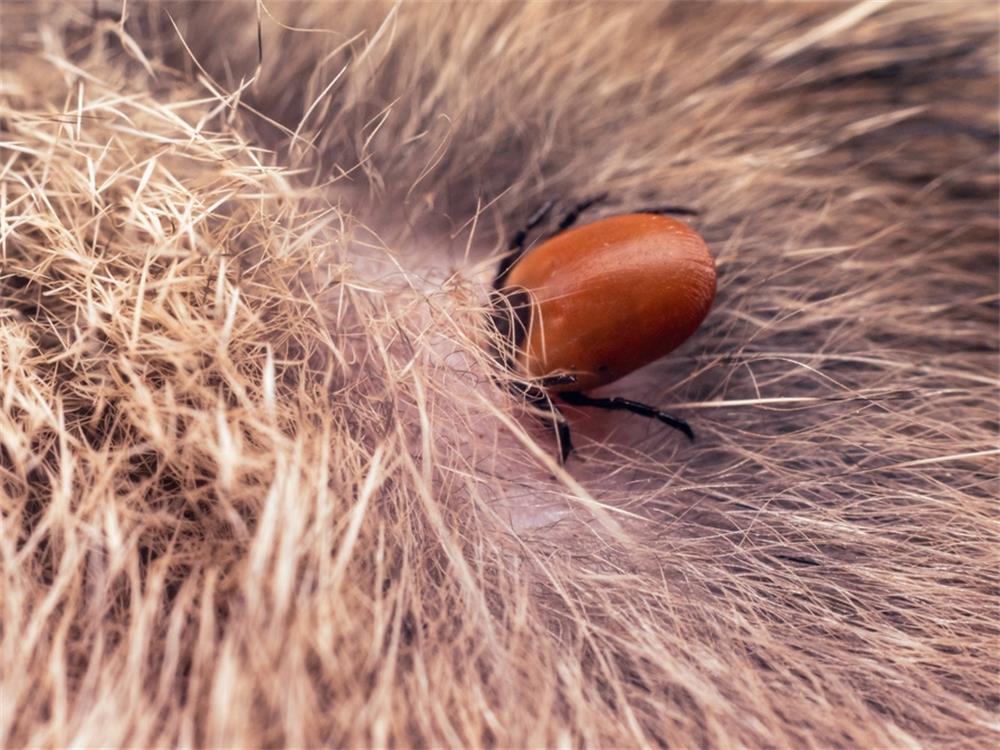Contents
Fleas and ticks are common parasites that can cause discomfort, irritation, and diseases in pets. They feed on the blood of their hosts and can transmit harmful pathogens, such as bacteria, viruses, and worms. Fleas and ticks can also infest your home and environment, making them difficult to eliminate. Therefore, it is important to prevent fleas and ticks on your pet before they become a problem.
What are fleas and ticks?
Fleas are small, wingless insects that have a flattened body and strong legs for jumping. They can jump up to 200 times their body length, which allows them to attach to animals and humans. Fleas have mouthparts that pierce the skin and suck blood. They can lay hundreds of eggs in their lifetime, which hatch into larvae that feed on organic debris in carpets, bedding, furniture, and soil. The larvae then spin cocoons and develop into pupae, which can remain dormant for months until they sense a suitable host nearby. The adult fleas then emerge from the cocoons and start the cycle again.
Ticks are arachnids, related to spiders and mites. They have eight legs and a round or oval body that expands when they feed. Ticks do not jump or fly, but they wait on vegetation or other surfaces for a host to pass by. They then latch onto the host’s fur or skin with their mouthparts and burrow their head into the skin. Ticks can feed for several days or weeks, depending on the species and life stage. They can also lay thousands of eggs in their lifetime, which hatch into larvae that feed on small animals or birds. The larvae then molt into nymphs, which feed on larger animals or humans. The nymphs then molt into adults, which mate and lay eggs.
Why are fleas and ticks harmful?
Fleas and ticks can cause a variety of health problems for pets and humans, such as:
- Itching and scratching: Flea bites can cause an allergic reaction in some pets, resulting in intense itching, redness, inflammation, hair loss, and skin infections. Ticks can also cause irritation and inflammation at the bite site.
- Anemia: Fleas and ticks can consume a large amount of blood from their hosts, especially if the infestation is severe or the host is young or small. This can lead to anemia, which is a low red blood cell count that causes weakness, lethargy, pale gums, and increased heart rate.
- Tapeworms: Fleas can carry tapeworm eggs in their digestive tract. If a pet ingests an infected flea while grooming or biting, the tapeworm eggs can hatch in the pet’s intestine and grow into adult worms. Tapeworms can cause weight loss, diarrhea, abdominal pain, and anal itching in pets.
- Lyme disease: Ticks can transmit Lyme disease, which is caused by a bacterium called Borrelia burgdorferi. Lyme disease can affect dogs and humans, causing fever, joint pain, lameness, swollen lymph nodes, loss of appetite, and kidney damage.
- Rocky Mountain spotted fever: Ticks can also transmit Rocky Mountain spotted fever, which is caused by a bacterium called Rickettsia rickettsia. Rocky Mountain spotted fever can affect dogs and humans, causing fever, rash, muscle pain, vomiting, diarrhea, neurological signs, and bleeding disorders.
How to prevent fleas and ticks on your pet?
The best way to prevent fleas and ticks on your pet is to use a veterinary-approved flea and tick prevention product regularly. There are different types of products available, such as:
- Topical spot-on treatments: These are liquid products that are applied to the skin of the pet’s neck or back once a month. They kill fleas and ticks on contact or after they bite the pet. Some examples are Frontline Plus, Advantage II, Revolution Plus, etc.
- Oral medications: These are pills or chewable that are given to the pet once a month or every three months. They kill fleas and ticks by interfering with their nervous system or reproductive system. Some examples are NexGard, Bravecto, Simparica, etc.
- Collars: These are collars that are worn by the pet around the neck for up to eight months. They release insecticides that kill fleas and ticks on contact or after they bite the pet. Some examples are Seresto, Scalibor, Preventic, etc.
- Shampoos: These are shampoos that are used to wash the pet’s fur once a week or as needed. They kill fleas and ticks on contact, but they do not provide long-term protection. Some examples are Adams Plus, Sentry, Vet’s Best, etc.
- Sprays: These are sprays that are applied to the pet’s fur or environment as needed. They kill fleas and ticks on contact, but they may not be as effective as other products. Some examples are Vet-Kem, Zodiac, Natural Care, etc.
The choice of product may depend on the pet’s age, weight, health, and preference. You should always consult your veterinarian before using any flea and tick prevention product on your pet. You should also read the label carefully and follow the instructions for proper use and dosage. You should never use products that are made for cats on dogs, or vice versa, unless the label says they are safe for both species.
In addition to using flea and tick prevention products, you can also take some other steps to reduce the risk of infestation, such as:
- Inspect your pet regularly: You should check your pet for fleas and ticks every day, especially after walks or outdoor activities. You can use a flea comb or a pair of tweezers to remove any parasites you find. You should also check yourself and your family members for ticks, as they can transmit diseases to humans as well.
- Wash your pet’s bedding: You should wash your pet’s bedding weekly with hot water and a laundry detergent with enzymes or oxygen bleach¹. This will help to kill any flea eggs, larvae, or pupae that may be hiding in the fabric.
- Clean your home: You should vacuum your carpets, rugs, furniture, and floors regularly to remove any flea eggs, larvae, or pupae that may be in the environment. You should also dispose of the vacuum bag or empty the canister outside to prevent re-infestation. You can also use a steam cleaner or a spray with insect growth regulators (IGRs) to kill any remaining fleas or ticks in your home.
- Treat your yard: You should keep your grass mowed short and remove any leaf litter, tall grasses, or brush from your yard. This will reduce the places where fleas and ticks can hide and breed. You can also use a spray with insecticides or natural repellents to kill or repel fleas and ticks in your yard.
Conclusion
Fleas and ticks are not only annoying, but they can also cause serious health problems for pets and humans. Therefore, it is essential to prevent fleas and ticks on your pet before they become a nuisance. You can use a variety of products and methods to protect your pet from these parasites, but you should always consult your veterinarian for the best option for your pet. By following these tips, you can keep your pet happy and healthy all year round.







